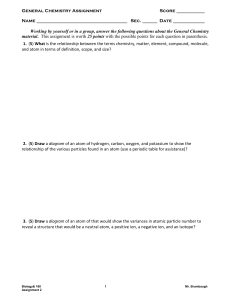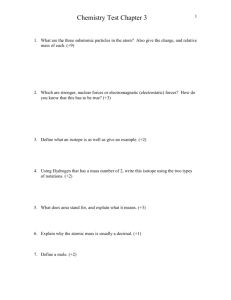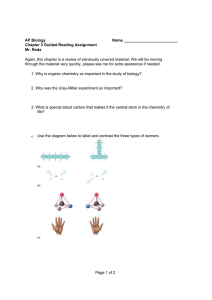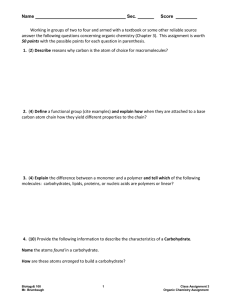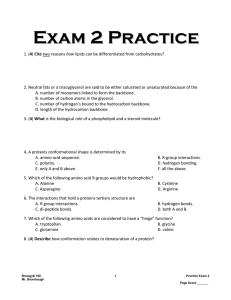Name Sec. Score
advertisement
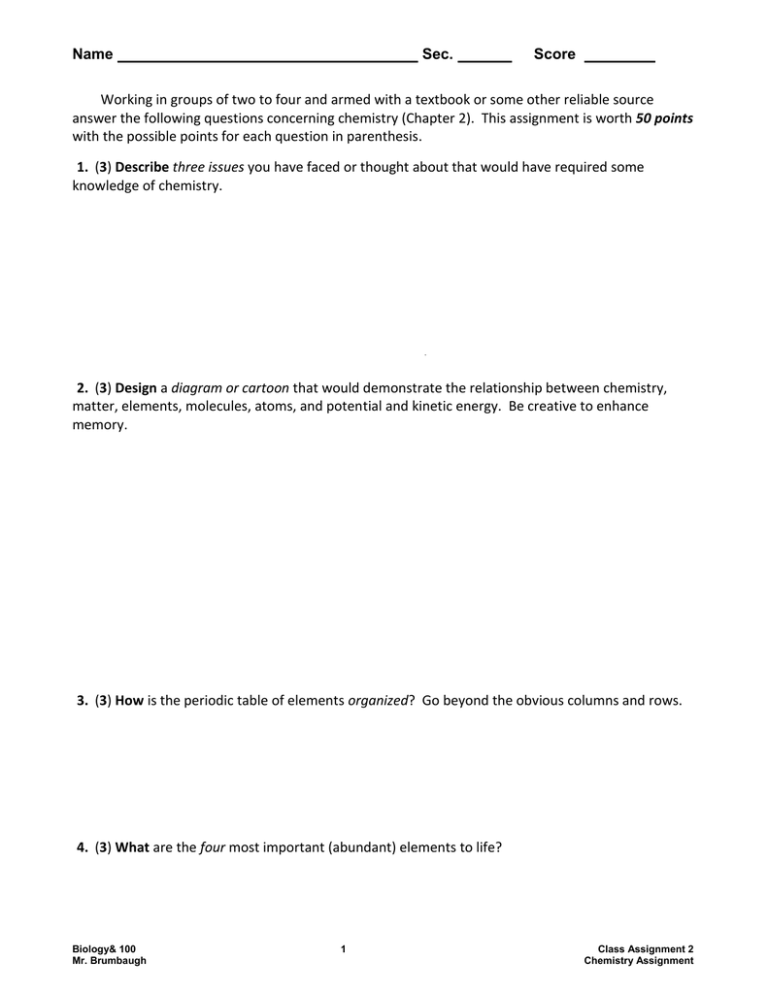
Name Sec. . Score . Working in groups of two to four and armed with a textbook or some other reliable source answer the following questions concerning chemistry (Chapter 2). This assignment is worth 50 points with the possible points for each question in parenthesis. 1. (3) Describe three issues you have faced or thought about that would have required some knowledge of chemistry. 2. (3) Design a diagram or cartoon that would demonstrate the relationship between chemistry, matter, elements, molecules, atoms, and potential and kinetic energy. Be creative to enhance memory. 3. (3) How is the periodic table of elements organized? Go beyond the obvious columns and rows. 4. (3) What are the four most important (abundant) elements to life? Biology& 100 Mr. Brumbaugh 1 Class Assignment 2 Chemistry Assignment 5. (3) Draw a diagram or cartoon showing the subatomic particles and their numbers for the atoms called oxygen and carbon. 6. (4) Differentiate between a neutral atom, an ion, and an isotope for the same atom by drawing a diagram of an atom that would demonstrate each condition? 7. (3) Fill-in the following blanks to describe the structure of an atom: Every atom consists of a central mass called the that contains the and a surrounding region (sometimes called the cloud or shell) . The move around the speeds. In the central mass we find the particles called and at very high . 8. (3) How does electronegativity and valence relate to chemical bonding? Biology& 100 Mr. Brumbaugh 2 Class Assignment 2 9. (4) Describe how an ionic, a polar co-valent, and non-polar covalent bond are formed and give a molecular example of each? 10. (4) Explain how each of the types of bonds in question #9 are used in biological systems? Think in terms of stability and energy. 11. (4) Why does water form hydrogen bonds and what unique features of water are attributable to this property? Biology& 100 Mr. Brumbaugh 3 Class Assignment 2 12. (3) Explain why a water skipper insect can stay afloat on the pond, but when you “walk” out you tend to submerge? 13. (5) Define each of the following terms: solution, solvent, solute, acid, base, pH, and buffer. 14. (5) Explain how the terms in question #13 can be applied to biological systems? Biology& 100 Mr. Brumbaugh 4 Class Assignment 2
